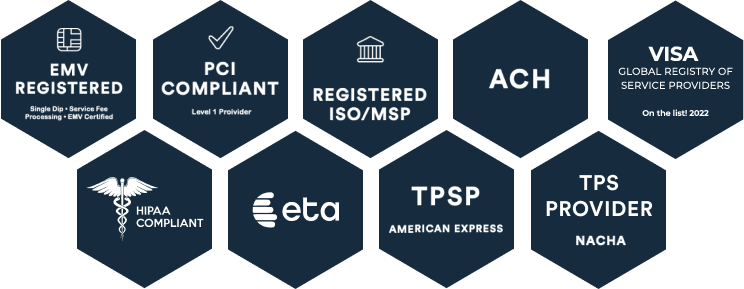*Last Updated: August 17, 2023
A balanced account is a hallmark of a well-structured organization, and accurately balancing your agency’s accounts requires following specific steps. While saving receipts or employing a structured spreadsheet can be helpful, verifying your records against your actual financial documents is essential.
A streamlined and accurate payment reconciliation process is crucial to maintain organizational efficiency. The process can become complex for a government agency with numerous receipts, invoices, statements, and data sources to reconcile.
Let’s dive deeper into the meaning and methods of payment reconciliation, along with payment reconciliation software, tools, and systems powerful enough to enhance the process for your government organization.
Table of Contents
- What Is Payment Reconciliation?
- Why Is Payment Reconciliation Important?
- What Is the Payment Reconciliation Process?
- The Benefits of Payment Reconciliation
- The Drawbacks of Payment Reconciliation
- Best Practices for Effective Payment Reconciliation
- What Is Automated Payment Reconciliation Software?
- Automate Your Reconciliation with CORE
What Is Payment Reconciliation?
Payment reconciliation is the process of comparing bank statements to your billing statement to ensure your records are accurate and up-to-date. It indicates that your citizens’ payments align with your financial records, ensuring payments are accurately allocated to the appropriate account. The process is an essential part of every government organization’s revenue management strategy.
Think of payment reconciliation as accurate bookkeeping. Daily account reconciliation ensures accounts are free from discrepancies, giving you peace of mind.
Why Is Payment Reconciliation Important?
Payment reconciliation is important for error detection, rectification, and financial management processes. It’s a legal requirement, and it fosters trust with constituents.
Timely and accurate payment reconciliation plays a crucial role in:
- Maintaining a transparent and auditable financial trail
- Enhancing organizational credibility
- Identifying and rectifying errors or discrepancies
- Safeguarding financial resources from potential losses
- Ensuring compliance with regulatory requirements
Ultimately, the payment reconciliation process is an indispensable practice that helps your agency identify errors earlier and make quicker corrective actions.
What Is the Payment Reconciliation Process?
At a high level, the payment reconciliation process is a three-step process:
1. Internal Review
Once a transaction posts through a scheduled payment, the department that received the payment will record the transaction. They may record it in a spreadsheet, accounting software, or any other form of record retention.
2. External Review
Banks record transactions, displaying withdrawals and deposits made in an account. Agencies can usually access these transactions via bank transfer (BAI) files.
3. Internal-External Comparison
Once records are ready, you or your automated system can compare the transactions to find discrepancies. You may see that an account was underpaid or discover unrecognizable transactions. You may also find that data was input incorrectly.
This comparison stage helps verify all transactions and ensure accounts are well-maintained.
The Benefits of Payment Reconciliation
Reconciliation ensures financial balance for your government agency. But that’s not the only benefit of payment reconciliation. The payment reconciliation process:
- Reduces fraud: For agencies, reconciliation serves as a security measure. You can quickly identify fraudulent transactions by frequently checking and comparing invoices to financial records.
- Avoids accounting error issues: Deposit mistakes happen, usually through human error. Although reconciliation can’t stop errors, it can prevent them from causing unwanted damage.
- Saves money: Proper financial management conserves fiscal resources. With vigilant monitoring, it’s easier to identify transactions related to unnecessary or unused services. A streamlined operation reduces time, energy, and manual labor for a smoother, quicker process.
- Simplifies regular payment processes: Reconciliation informs you of recurring payments, helping reduce unexpected expenses, late payments, and outstanding balances.
- Clarifies debts and transaction history: You can manage invoices more effectively with a streamlined payment reconciliation process. This process ensures charges don’t go unnoticed and provides a clearer view of financial transactions and obligations.
The Drawbacks of Payment Reconciliation
Really, there are no drawbacks to payment reconciliation—it’s entirely advantageous to have a better understanding of your accounts. However, there are drawbacks to manual reconciliation, that is, the reliance on manual data entry and paper copies to monitor cash flow.
Here are a few drawbacks to using manual reconciliation:
- Susceptible to errors: As mentioned before, human error is the primary cause of accounting errors. If you rely only on manual entry, you’re bound to get reconciliation errors and must scramble to find the missing money.
- Takes too much time: The frequent number crunching demands your time. Employees may spend multiple working days every month just on reconciliation, which is in seconds with automated reconciliation software.
- Lacks contextual data: Most modern digital forms of reconciliation allow users to view robust data relating to their transactions. Doing it manually usually loses that extra data. When you check back later, you’ll miss out on heaps of data that supply needed context behind each transaction.
Fortunately, your agency can largely avoid these drawbacks by switching to payment reconciliation software.
Best Practices for Effective Payment Reconciliation
These strategic approaches to payment reconciliation ensure accuracy, accountability, and transparency in financial transactions:
- Establish Clear Procedures
- Implement well-defined processes outlining roles and steps for each type of reconciliation.
- Adhere to a Reconciliation Schedule
- Ensure the performance of daily, weekly, and monthly reconciliation processes at predefined intervals.
- Segregate Duties
- Assign distinct roles to personnel to ensure the establishment of checks and balances.
- Cross-Reference Multiple Data Sources
- Review transactional data from various sources to consider multiple accounting systems simultaneously.
- Implement Controls and Reviews
- Require periodic reviews by higher-level personnel or internal auditors.
- Maintain Accurate Records
- Keep thorough and organized records of reconciliations, including supporting documents and audit trails.
- Stay Abreast of Regulatory Changes
- Remain informed of regulation and reporting requirements that could impact reconciliation processes.
- Create Unique Ledger Accounts
- Reserve unique ledger accounts for different transaction types or sources for reconciliation.
- Perform Periodic Reviews
- Regularly check for updates to processes, vendors, staff, and records.
- Automate Processes
- Utilize tools and automated software to accelerate the reconciliation timeline and reduce human error.
What Is Automated Payment Reconciliation Software?
Payment reconciliation software, or automated reconciliation, is the same as the payment reconciliation process mentioned above, only completely digital and much faster.
Benefits of Payment Reconciliation Software
Transitioning to automated reconciliation software can transform your government agency’s process from the ground up. Automated cash reconciliation offers all of the same benefits as manual reconciliation, plus the following:
- Reduced personnel hours needed to complete the task
- Decreased input errors
- Improved employee productivity and efficiency
- Reduced stress from meeting month-end reporting deadlines
The advantages extend even further:
Greater Financial Control
Integrating systems with automated payment reconciliation software reduce common complexities involved in the reconciliation process. The software merges seamlessly with your primary billing system, optimizing multiple ledgers and access points in one centralized location.
Precise Data Analytics
Accuracy is everything in the world of reconciliation. Automated accounting mechanisms offer a comprehensive view of your agency’s financial records, so you no longer have to rely on manual reporting.
Upgraded Capability
Tools like automated balance sheet reconciliation and user-friendly payment processing solutions infuse even more efficiency and flexibility into your workflow. These tools enhance your department’s capabilities by putting powerful tools in the hands of your team.
Enhanced Processing Speed
The sluggish pace of manual processing can become a roadblock in the reconciliation process. Financial timelines speed up significantly by accessing payment processing and reconciliation in a single platform.
Simplified Framework
Payment reconciliation software allows you to view all accounts from a single platform. No more jumping between different spreadsheets to get an idea of your accounts’ well-being—you can see your accounts and compare them to bank transactions from a single webpage.
These advantages form the basis of CORE’s automated payment reconciliation software solution. CORE’s all-in-one platform radically simplifies payment reconciliation and time-to-revenue to transform the payment experience for constituents and backend processes.
Discover How Davenport Transformed Payment Reconciliation with CORE
The City of Davenport utilized CORE’s seamless IVR platform to better meet the needs of constituents, local business owners, and internal departments. Discover how they leveraged powerful payment reconciliation software to reduce costs, downtime, and various roadblocks in their payment experience. >> Read More
Automate Your Reconciliation with CORE’s Payment Process Solution
If you’re ready to create payment reconciliation reports on a faster timetable and with improved accuracy, it’s time to adopt automated payment processing and reconciliation software. CORE’s reconciliation service makes it easier than ever to reconcile and manage your organization’s financial accounts. Contact us today to see firsthand what automated reconciliation can do for you.






